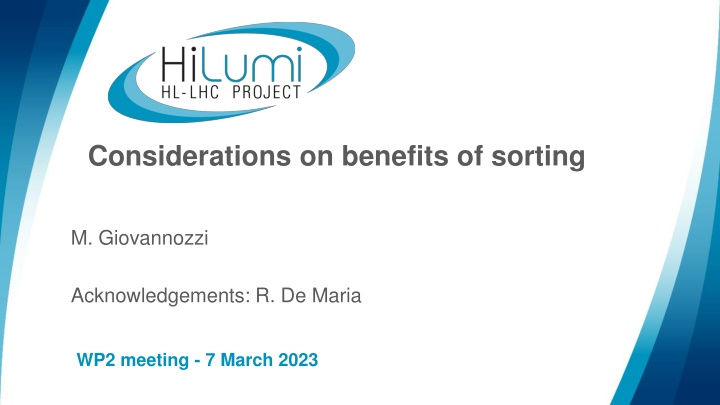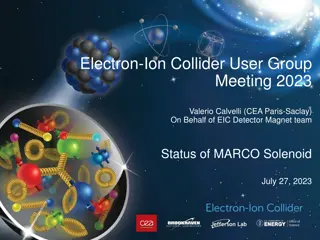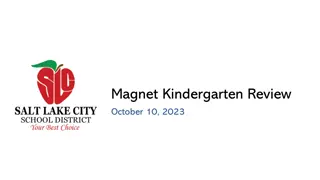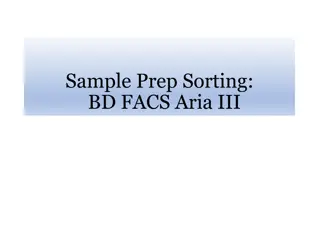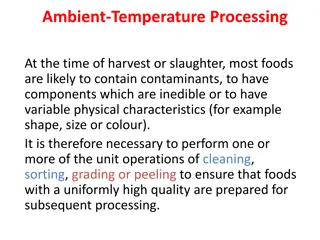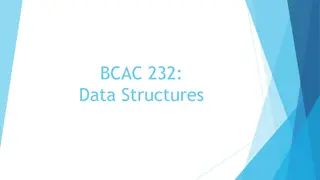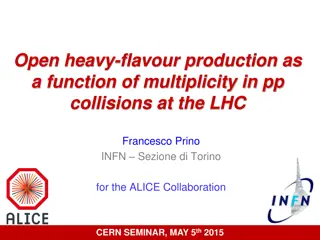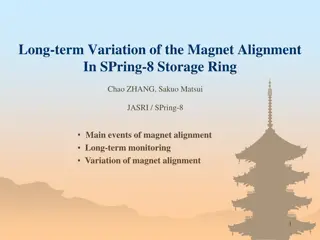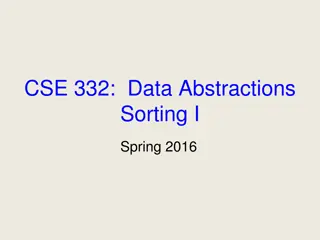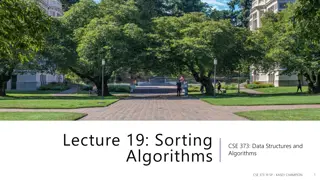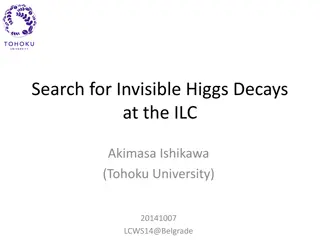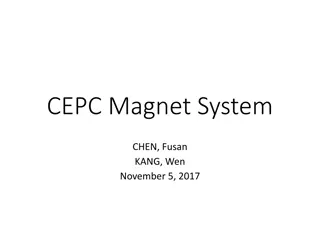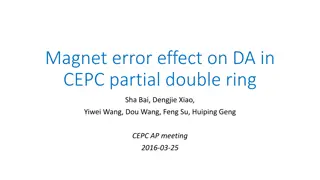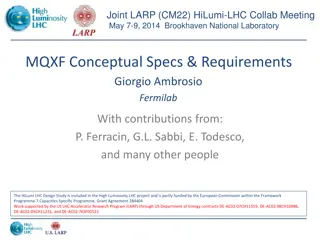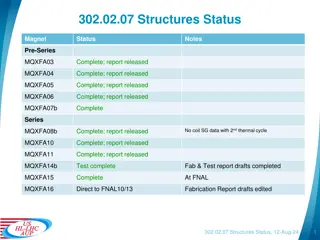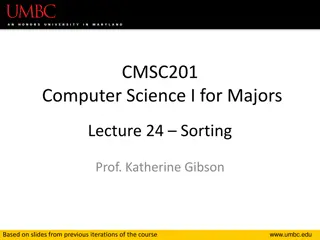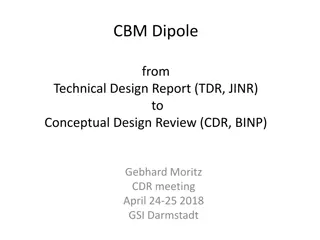Optimizing Benefits Through Sorting in LHC Magnet Systems
LHC's experience highlights the significant advantages of sorting in magnet systems, such as safeguarding against losses in mechanical and dynamic apertures, minimizing beta-beating, and enhancing field quality. By controlling observable quantities like mechanical aperture, transfer function, and field quality, strategic sorting can be achieved to improve overall system performance and efficiency.
Download Presentation

Please find below an Image/Link to download the presentation.
The content on the website is provided AS IS for your information and personal use only. It may not be sold, licensed, or shared on other websites without obtaining consent from the author.If you encounter any issues during the download, it is possible that the publisher has removed the file from their server.
You are allowed to download the files provided on this website for personal or commercial use, subject to the condition that they are used lawfully. All files are the property of their respective owners.
The content on the website is provided AS IS for your information and personal use only. It may not be sold, licensed, or shared on other websites without obtaining consent from the author.
E N D
Presentation Transcript
Considerations on benefits of sorting M. Giovannozzi Acknowledgements: R. De Maria WP2 meeting - 7 March 2023
LHC experience on sorting Summary of the general sorting benefit When compared to a random installation, sorting has guarded against a loss of mechanical aperture estimated at 1.5 mm, a loss of dynamic aperture estimated at 1 , an increase of beta-beating by 5 to 10 % L. Bottura et al., Magnet Acceptance and Allocation at the LHC Magnet Evaluation Board , 22nd Particle Accelerator Conf. (PAC 07) 2 M. Giovannozzi - CERN
LHC experience on sorting Summary of the general sorting benefit Low Beta Quadrupoles Sorting was based on the geometry, in view of maximizing the aperture. The alignment shifts specified for these magnets have been optimized to achieve an aperture of 8.4 , with a minimum quadrupole feed- down, so that local orbit corrections should require at most 30 % of the dipole corrector strength. Cold Separation and Recombination Dipoles Field quality was within the specifications, and the best magnets were allocated to the most critical slots. The analysis of aperture was done on a one-by-one basis. The main issue was the observed deviations (up to 2 mm) between the expected straightness and the measured shape of the cold bore. Installation shifts were sufficient to recover the specified aperture. L. Bottura et al., Magnet Acceptance and Allocation at the LHC Magnet Evaluation Board , 22nd Particle Accelerator Conf. (PAC 07) 3 M. Giovannozzi - CERN
Magnet sorting: quantities to control Based also on the LHC experience, three observables should be used for sorting: Mechanical aperture (beam aperture) Transfer function (beta-beating) Field quality (strength of CP magnets, DA, lifetime) A hierarchy between the observables has to be defined. 4 M. Giovannozzi - CERN
Magnet sorting: strategies Aperture Define installation shifts. Transfer function Matching magnets in the same circuit (applicable to Q2). Field quality The phase advance cannot be used to cancel multipole components. The guiding criterion is the minimisation of the strength used by the CP magnets, and distribute magnets so that the CP magnets are used almost in the same way on the four sides of IP1/5. Dipoles and quadrupoles have different systematic multipoles, which suggests optimising the field quality in blocks D1 and D2 (the fields are opposite the average between the two apertures should be considered for D2) Triplet quadrupoles 5 M. Giovannozzi - CERN
Estimate of possible benefits of sorting Aperture Any deviation from the nominal shape should be corrected with installation shifts for aperture reasons corrector strength Assumed deviation for triplets: 1.7 mm Nominal sigma: 3 mm Gain: 0.6 sigma -> effect on * -> 10% From LHC experience: we should prevent unknown deviations. R. De Maria, Alignment and mechanical tolerances for HL-LHC in Point 1 and 5 , LHC-G-ES-0023, EDMS 2458050 6 M. Giovannozzi - CERN
Estimate of possible benefits of sorting Beta-beating Q2 sorting is the baseline since the decision of removing between Q2A and Q2B. In the case of perfect sorting the difference in transfer function can be made < 13 units with 90% probability. From LHC experience: we should prevent unknown situations. Extreme case with +30 units in Q2a and -30 in Q2b (no sorting, max ?-beating for 100 seeds).10 units TF error in the rest and 5mm misalignments in all. J. Coello in HL-LHC Magnet Circuits Internal Review 2017 the trim rms about 19% R. Tom s, Desiderata for sorting: transfer function , Kick-off meeting on sorting in the HL LHC 7 M. Giovannozzi - CERN
Thank you for your attention! 8 M. Giovannozzi - CERN
